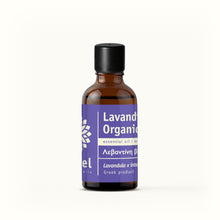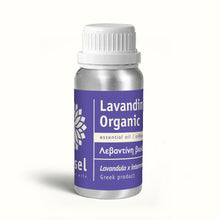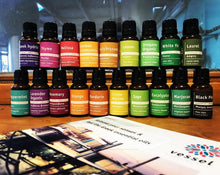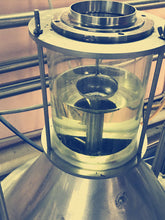Greek Lavandin Organic Essential Oil
Regular price
€5.10
€6.40
Sale
If you are interested in buying larger size quantities we would love to receive your email at info@vessel.gr
Greek Lavandin Organic Essential Oil
Batch: E1001625



Other common names: Dutch lavender, Lavender hybrid, bastard lavender
Botanical name: Lavandula x intermedia
Botanical family: Lamiaceae (Labiatae)
Method of extraction: Steam distillation
Plant part used to extract the oil: Flowering tops
Cultivation method: Certified Organic
Area of origin: Greece
Historical notes:
Lavandin was first discovered when cutters were harvesting wild Lavender (Lavandula angustifolia) and spotted bigger, annual plants in the area. They became known as “rough lavender” or “crossed lavender”. These were lavandins from the natural hybridization of lavender and spike lavender (Lavandula latifolia) that grow at a common elevation of around 600-800m above sea level.
Natural hybridization is mostly due to flower-visiting insects, especially bees cross-pollinating the plants. Being a hybrid makes the lavandin sterile (seeds will not produce plants) and therefore its propagation is only possible by taking cuttings.
By late 1920s the method of taking cuttings had become well understood and cultivation of lavandin became more popular. Since then many cultivars were developed and lavandins such as ‘Abrialii’, ‘Grosso’ and “Super” are all commonly used for the production of oil.
Biochemical group: Alcohols (Monoterpenols)
Main chemical compounds: linalool, linalyl acetate, camphor, 1,8-cineole, borneol, trans-β-ocimene, β-caryophyllene, terpinene-4-ol, lavandulyl acetate, limonene, cis-β-ocimene, α-terpineol, others
Colour: clear
Consistency: thin
Aroma strength: medium
Perfumery note: middle
Aroma: fresh, sweet and floral, an untrained nose might be tricked into thinking it was sniffing yet another sample of gorgeous lavender oil. Our lavandin oil is beautifully balanced, with linalool and linalyl acetate bringing sweet floral nuances and low levels of camphor lending fresh notes without harsh camphoraceous undercurrent.
Traditional aromatherapy uses:
- Traditionally in aromatherapy treatments lavandin essential oil is associated with the following therapeutic properties: analgesic, anti-convulsive, antidepressant, antimicrobial, antirheumatic, antiseptic, antispasmodic, antitoxic, carminative, cholagogue, cicatrisant, cordial, cytophylactic, deodorant, diuretic, emmenagogue, hypotensive, insecticide, nervine, parasiticide, rubefacient, sedative, stimulant, sudorific, tonic, vulnerary.
- Qualified aromatherapists may use lavandin essential oil for common complaints such as:
- skin care: acne, boils, wound healing
- respiratory system: catarrh, laryngitis, bronchitis, throat infections, cold and flu
- circulation and muscular aches and pains, rheumatism, back aches
- others – soaps, disinfectants, cleansing agents, deodorants, room sprays, etc.
- How we use it:
Please, also see our How to Use Essential Oils Safely page for more information.
- For a face cream - add together with our Sweet orange essential oil to an unscented face cream
- For colds, flu and related conditions - vapourise a couple of drops in your room. Try adding our Lemon essential oil which is also often used in sick rooms to help combat infections.
- For muscular aches and pains – dilute in a fixed oil (carrier oil) and massage affected areas. Try adding a drop of our Rosemary essential oil for a stronger blend.
Safety considerations:
Tisserand and Young indicate that lavandin essential oil may inhibit blood clotting and pose a drug interaction hazard. Reading Tisserand and Young's full profile is recommended. [Robert Tisserand and Rodney Young, Essential Oil Safety (Second Edition. United Kingdom: Churchill Livingstone Elsevier, 2014), 325.]
Please, also see our How to Use Essential Oils Safely page for more information.
Research and studies:
- Antimicrobial activity and chemical composition of some essential oils.
https://www.ncbi.nlm.nih.gov/pubmed/12510839
- Antifungal effect of various essential oils against Candida albicans. Potentiation of antifungal action of amphotericin B by essential oil from Thymus vulgaris.
https://www.ncbi.nlm.nih.gov/pubmed/15742351
- Antinociceptive and gastroprotective effects of inhaled and orally administered Lavandula hybrida Reverchon "Grosso" essential oil.
https://www.ncbi.nlm.nih.gov/pubmed/15519366
Margaret Pawlaczyk-Karlinski MSc. (Hons.), Cert. Ed., M.I.F.A., NHS reg.









